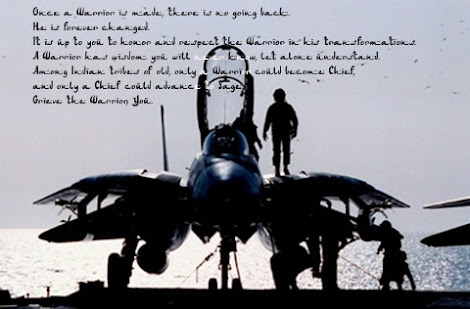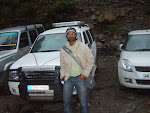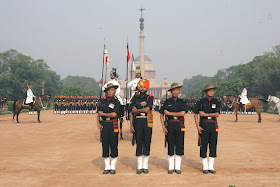Presumably, Lockheed’s “Block 70” or to be specific F-60IN offering would be an upgraded version of the F-16E Block 60 “Desert Falcon” currently serving with the UAE.In addition to that F-16IN will also incorporate supercruise abilities.The exact technical details of F-16IN are still in the hands of Lockheed and IAF, so I will try to explain IN version with the help of Desert Falcon’s configurations. Strengths include the widest multi-role capability among ligh
 tweight fighters; its AN/APG-80 AESA radar; the addition of integrated IRST capability; the widest choice of proven avionics and weapon systems; a long record of proven service so all issues are known; and widespread compatibility with potential allies in Asia and the Middle East who also fly F-16s. The combination of an AESA radar on a less expensive platform is also good news for cruise missile defense efforts, if that’s considered a priority. The F-16 Block 60, also known as the Desert Falcon (and F-16E/F in some circles), is the most advanced F-16 ever produced. An internal, forward-looking infrared navigation sensor mounted as a ball turret on the upper left nose distinguishes the Block 60 from previous F-16s. Other distinguishing external characteristics include a targeting pod with faceted windows, no pitot tube, strip lighting on the wings and vertical tail, an air scoop on the forward right tail root, a small exhaust on the forward left tail root, and two other exhaust ports—one on either side of the lower rear portion of the engine inlet. Both single- and two-seat aircraft carry the conformal fuel tanks.These external differences don’t detract from the F-16’s renowned aerodynamic performance. The increased thrust GE-132 engine helps compensate for the increase in weight and payload over the basic F-16. Internal differences, on the other hand, add up to a huge improvement in capability over previous-generation F-16s and place the Block 60 at the leading edge of fourth-generation fighters.These internal differences are most apparent in the cockpit, which is dominated by three large five- by seven-inch color multifunction displays. Onboard computers collect and process information from the various sensors and off-aircraft sources and transmit the results to the pilot in straightforward color graphics. The all-glass cockpit features hands-on throttle and sidestick switch controls, a color moving map, picture-in-picture digital display technology, night vision goggle-compatible lighting, and a standard head-up display.The Desert Falcon has many automated modes, including autopilot, auto-throttle, and an automatic ground collision avoidance system. The electronic warfare system, produced by Northrop Grumman, is the most sophisticated subsystem on the aircraft and provides threat warning, threat emitter locating capability, and increased situational awareness to the pilot. A new data transfer cartridge holds thirty gigabytes of information. A fiber-optic databus handles the throughput and speed needed for many of these systems. The maintenance system is laptop based.But as far as Indian Air force is concerned , The system will be more complex and mixed.IAF will surely press for best of avionics from Indian agencies,American agencies as well as from Russian,French and Israeli agencies.
tweight fighters; its AN/APG-80 AESA radar; the addition of integrated IRST capability; the widest choice of proven avionics and weapon systems; a long record of proven service so all issues are known; and widespread compatibility with potential allies in Asia and the Middle East who also fly F-16s. The combination of an AESA radar on a less expensive platform is also good news for cruise missile defense efforts, if that’s considered a priority. The F-16 Block 60, also known as the Desert Falcon (and F-16E/F in some circles), is the most advanced F-16 ever produced. An internal, forward-looking infrared navigation sensor mounted as a ball turret on the upper left nose distinguishes the Block 60 from previous F-16s. Other distinguishing external characteristics include a targeting pod with faceted windows, no pitot tube, strip lighting on the wings and vertical tail, an air scoop on the forward right tail root, a small exhaust on the forward left tail root, and two other exhaust ports—one on either side of the lower rear portion of the engine inlet. Both single- and two-seat aircraft carry the conformal fuel tanks.These external differences don’t detract from the F-16’s renowned aerodynamic performance. The increased thrust GE-132 engine helps compensate for the increase in weight and payload over the basic F-16. Internal differences, on the other hand, add up to a huge improvement in capability over previous-generation F-16s and place the Block 60 at the leading edge of fourth-generation fighters.These internal differences are most apparent in the cockpit, which is dominated by three large five- by seven-inch color multifunction displays. Onboard computers collect and process information from the various sensors and off-aircraft sources and transmit the results to the pilot in straightforward color graphics. The all-glass cockpit features hands-on throttle and sidestick switch controls, a color moving map, picture-in-picture digital display technology, night vision goggle-compatible lighting, and a standard head-up display.The Desert Falcon has many automated modes, including autopilot, auto-throttle, and an automatic ground collision avoidance system. The electronic warfare system, produced by Northrop Grumman, is the most sophisticated subsystem on the aircraft and provides threat warning, threat emitter locating capability, and increased situational awareness to the pilot. A new data transfer cartridge holds thirty gigabytes of information. A fiber-optic databus handles the throughput and speed needed for many of these systems. The maintenance system is laptop based.But as far as Indian Air force is concerned , The system will be more complex and mixed.IAF will surely press for best of avionics from Indian agencies,American agencies as well as from Russian,French and Israeli agencies.Even so, the Indian Air Force has never seemed very interested in the F-16. Weaknesses include the fact that Pakistan also flies F-16s; and it has not performed well in USAF-IAF cope series exercises.The fact it’s a new aircraft type so the entire support infrastructure would have to be developed; and the difficulty Lockheed would have complying with industrial offset provisions given their lack of penetration in India.But Lockheed is inclined to set up a full assembly line here in india. The MMRCA RFP’s delays may have helped Lockheed Martin by allowing them ample time to find arrangements with Indian firms, and there are reports that the USA is pushing this option because of the reassurance factor. While an F-16 E/F Block 60+ would have a number of important advantages over Pakistan F-16 A/Bs and even its new Block 50/52 aircraft, the common underlying aircraft type would probably take some of the edge off of the deal from Pakistan’s point of view.






















0 comments:
Post a Comment